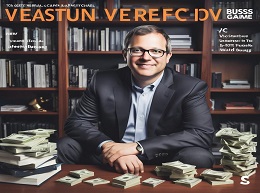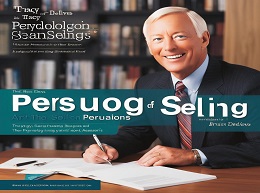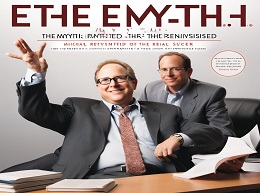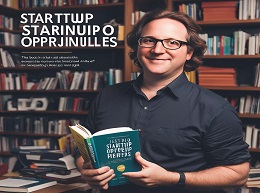The Seven Sins of Innovation: A Strategic Model for Entrepreneurship

The Seven Sins of Innovation: A Strategic Model for Entrepreneurship - A Comprehensive Review
"The Seven Sins of Innovation: A Strategic Model for Entrepreneurship" by David Frohlich provides a thoughtful and practical framework for understanding the common pitfalls that can derail innovation and entrepreneurial efforts. This review will delve into the book’s key concepts, illustrate them with engaging examples, and discuss the broader implications for aspiring entrepreneurs and innovators.
Understanding the Seven Sins
David Frohlich's "The Seven Sins of Innovation" identifies and explores seven critical mistakes that entrepreneurs often make, offering a strategic model to avoid these pitfalls. By addressing these sins, entrepreneurs can enhance their chances of success and drive sustainable innovation.
The Seven Sins of Innovation
1. Pride: Overestimating the Market Demand
2. Gluttony: Overcommitting Resources
3. Sloth: Underestimating the Effort Required
4. Greed: Prioritizing Short-Term Gains
5. Wrath: Ignoring Customer Feedback
6. Envy: Copying Competitors
7. Lust: Chasing Shiny Objects
Pride: Overestimating the Market Demand
Pride in the context of innovation refers to the overconfidence entrepreneurs often have in their product's market demand. This sin can lead to misallocated resources and ultimately, failure.
Example: Segway
The Segway is a classic example of overestimating market demand. When it was launched in 2001, it was touted as a revolutionary mode of transportation. However, the market did not embrace it as expected, and sales fell far short of projections. The Segway's failure to gain widespread adoption highlights the importance of thoroughly understanding market needs and validating demand before scaling.
Gluttony: Overcommitting Resources
Gluttony involves the overcommitment of resources time, money, and effort without ensuring a sustainable plan for their utilization. This can lead to burnout and financial ruin.
Example: Webvan
Webvan, an online grocery delivery service from the dot-com bubble era, committed substantial resources to building an extensive infrastructure before validating the market demand. The company invested heavily in warehouses and delivery systems, but the demand was insufficient to support such a large-scale operation. Webvan's downfall underscores the importance of resource allocation and scalability.
Sloth: Underestimating the Effort Required
Sloth in innovation is the underestimation of the effort required to bring a product to market and achieve success. Entrepreneurs might assume that their idea alone is enough without putting in the necessary work.
Example: Juicero
Juicero, a startup that sold high-tech juicers and subscription juice packs, underestimated the complexity and effort needed to create value for consumers. The product was criticized for its high cost and the revelation that the juice packs could be squeezed by hand, making the machine redundant. Juicero's failure illustrates the dangers of not fully understanding the effort required to create a meaningful and valued product.
Greed: Prioritizing Short-Term Gains
Greed in entrepreneurship refers to the focus on short-term gains at the expense of long-term sustainability and success. This can lead to decisions that undermine the potential for enduring innovation.
Example: Theranos
Theranos, a health technology company, prioritized short-term gains and media hype over the sustainable development of its blood-testing technology. By focusing on rapid growth and public perception, Theranos neglected the scientific and operational rigor needed for long-term success, leading to its eventual collapse. This case exemplifies the pitfalls of prioritizing short-term gains over long-term viability.
Wrath: Ignoring Customer Feedback
Wrath in innovation is the failure to listen to and incorporate customer feedback. This sin can alienate customers and lead to products that do not meet market needs.
Example: Microsoft Zune
The Microsoft Zune, an MP3 player meant to compete with Apple’s iPod, failed in part because Microsoft did not adequately listen to customer feedback. Users found the device's interface and ecosystem less intuitive and user-friendly than the iPod's. Ignoring the feedback and preferences of potential customers contributed to the Zune's market failure. This example highlights the critical importance of engaging with and responding to customer feedback.
Envy: Copying Competitors
Envy in entrepreneurship involves imitating competitors instead of innovating and creating unique value. This approach can lead to a lack of differentiation and competitive edge.
Example: Friendster
Friendster, an early social networking site, struggled to differentiate itself after competitors like MySpace and Facebook entered the market. By focusing on copying features rather than innovating, Friendster failed to establish a unique value proposition and ultimately lost its user base. The downfall of Friendster serves as a reminder to focus on innovation and differentiation rather than merely imitating competitors.
Lust: Chasing Shiny Objects
Lust in the context of innovation refers to the pursuit of trendy, flashy ideas without considering their long-term value or alignment with the core business strategy.
Example: Google Glass
Google Glass, an ambitious project to create augmented reality glasses, initially generated significant buzz. However, the product failed to gain traction due to privacy concerns, usability issues, and a lack of clear use cases. Google’s pursuit of this shiny object without adequately addressing these challenges led to the product's failure in the consumer market. This example demonstrates the risks of chasing trendy ideas without a clear and sustainable plan.
Strategies to Avoid the Seven Sins
To mitigate these common pitfalls, Frohlich offers several strategies:
1. Conduct Thorough Market Research : Validate demand through detailed market analysis and pilot testing before scaling.
2. Allocate Resources Wisely : Ensure that resources are committed incrementally and aligned with validated milestones.
3. Commit to Effort : Recognize the effort required and be prepared to invest the necessary time and energy to achieve success.
4. Focus on Long-Term Value : Prioritize sustainable growth and long-term value over short-term gains.
5. Listen to Customers : Engage with customers continuously and incorporate their feedback into product development.
6. Innovate, Don’t Imitate : Focus on creating unique value propositions and differentiating from competitors.
7. Stay Grounded : Avoid getting distracted by trends and maintain a clear, strategic focus.
Embracing a Strategic Approach to Innovation
"The Seven Sins of Innovation" offers a valuable framework for understanding and avoiding the common pitfalls in entrepreneurship. By identifying these sins and implementing strategies to avoid them, entrepreneurs can enhance their chances of building successful, sustainable businesses.
Final Thoughts: Practical Takeaways for Entrepreneurs
For aspiring entrepreneurs, Frohlich’s insights provide practical guidance:
- Validate Before Scaling : Ensure that there is genuine market demand and validate your assumptions with real data.
- Resource Management : Allocate resources strategically, avoiding overcommitment until there is clear evidence of potential success.
- Effort and Resilience : Be prepared for the hard work required and remain resilient in the face of challenges.
- Long-Term Focus : Prioritize decisions that build long-term value rather than short-term gains.
- Customer-Centric Approach : Continuously engage with and listen to your customers to ensure your product meets their needs.
- Innovative Mindset : Focus on creating unique and innovative solutions rather than copying competitors.
- Strategic Discipline : Maintain a strategic focus and avoid getting sidetracked by flashy trends.
By embracing these principles, entrepreneurs can navigate the complex landscape of innovation more effectively, increasing their chances of building successful and impactful ventures. "The Seven Sins of Innovation" serves as a comprehensive guide for anyone looking to understand the intricacies of entrepreneurship and drive meaningful innovation.













